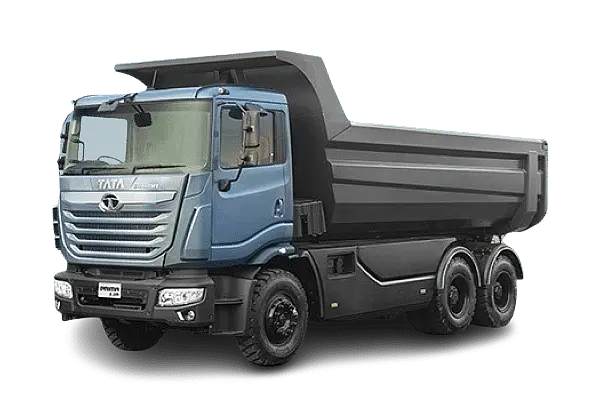India is shifting gears toward electric mobility, and Tata Motors is leading the charge with its Tata Ace EV – the country’s first electric mini truck. Designed specifically for last-mile delivery, this small commercial vehicle (SCV) combines zero-emission technology with Tata’s trusted utility design. Whether you’re a fleet owner, small business, or delivery service provider, the Tata Ace EV is a game-changer.
In this detailed review, we explore the specifications, features, pricing, benefits, performance, and real-world usability of the Tata Ace EV.
🚚 What is Tata Ace EV?
Launched in May 2022, the Tata Ace EV is the electric version of Tata’s iconic Ace mini truck, commonly known as “Chota Haathi”. This vehicle is developed under Tata’s EV ecosystem called EVOGEN, and it is targeted toward urban and semi-urban logistics businesses.
With a robust build, impressive payload capacity, and a strong focus on sustainability, the Ace EV is an ideal partner for last-mile cargo transport.
🔍 Key Features of Tata Ace EV
| Feature | Description |
|---|---|
| Motor | 27 kW (36 hp) Permanent Magnet Synchronous Motor |
| Battery | 21.3 kWh LFP (Lithium Iron Phosphate) battery |
| Range | Up to 154 km (certified range) |
| Charging Time | Fast Charging (105 min), Normal Charging (6–7 hrs) |
| Top Speed | 60 km/h |
| Payload Capacity | 600 kg |
| Gradeability | 22% (ideal for city inclines and flyovers) |
| GVW | 1,840 kg |
| Body Type | Cabin + Load Body (Open or Fully Built options) |
| Connectivity | Tata Fleet Edge telematics |
| Drive Modes | Eco & Normal |
| Chassis | Rugged ladder frame design |
⚡ Performance and Driving Experience
The Tata Ace EV offers a smooth and silent ride with instant torque delivery – a common benefit of electric drivetrains. Its low center of gravity and independent front suspension provide better balance, especially when fully loaded. Drivers report better comfort compared to diesel counterparts due to minimal vibration and reduced fatigue.
Key Driving Highlights:
-
Instant acceleration for quick urban navigation
-
Regenerative braking system for enhanced energy recovery
-
Dual driving modes for efficiency and power management
💰 Tata Ace EV Price in India
As of 2025, the Tata Ace EV price starts at ₹7.34 lakh (ex-showroom). However, state EV subsidies (like in Delhi, Maharashtra, Gujarat) can significantly reduce the on-road price.
| Variant | Ex-Showroom Price (approx) |
|---|---|
| Tata Ace EV Standard | ₹7.34 lakh |
| Tata Ace EV with Telematics | ₹7.49 lakh |
| On-Road Price (After Subsidy) | ₹6.5–7 lakh* (varies by state) |
💡 *Note: Government incentives, FAME-II subsidies, and state EV policies play a crucial role in final pricing.
🔋 Battery and Charging Insights
Tata Ace EV uses a high-efficiency LFP battery, known for:
-
Longer lifecycle (2,000+ cycles)
-
Better thermal safety
-
Resistance to overcharging
It supports:
-
Fast Charging (CCS2 connector) – 10% to 80% in under 2 hours
-
Home/AC Charging – Full charge in 6–7 hours using a 15A plug
Charging infrastructure is expanding rapidly in metro cities, thanks to Tata Power and other providers.
📦 Cargo Space and Utility
The load body is designed to carry essentials like:
-
FMCG products
-
E-commerce parcels
-
Vegetables and dairy
-
Pharma and cold-chain items
Available options:
-
High-side deck
-
Fully built box body
-
Custom load body for delivery partners
🌱 Why Choose Tata Ace EV?
Here’s why it’s a smart investment:
| Benefit | Description |
|---|---|
| Eco-Friendly | Zero tailpipe emissions |
| Low Running Cost | ₹0.90 – ₹1.10/km (vs ₹4/km for diesel) |
| Silent Operation | No engine noise, better for urban delivery |
| Government Incentives | FAME-II + State EV benefits |
| Corporate Tie-ups | Already used by Amazon, Flipkart, BigBasket, and DHL |
🏁 Competitors in Market
While Tata Ace EV is India’s first, here are a few upcoming rivals:
| Competitor | Status |
|---|---|
| Mahindra eSupro Cargo Van | Available |
| Piaggio Ape E-Xtra | Available (3-wheeler segment) |
| Omega Seiki Rage+ | 3-wheeler electric loader |
| Ashok Leyland Bada Dost EV | Expected soon |
🧰 Service and Warranty
Tata offers:
-
3-year / 100,000 km warranty
-
Battery warranty: 5 years or 1,60,000 km
-
Roadside assistance
-
EV service trained dealerships across India
📱 Digital Connectivity – Tata Fleet Edge
Tata Ace EV comes with Fleet Edge, a connected vehicle platform that provides:
-
Real-time vehicle tracking
-
Geo-fencing and remote immobilization
-
Trip and driver behavior insights
-
Predictive maintenance alerts
Perfect for fleet owners to monitor and manage multiple vehicles easily.
📈 Is Tata Ace EV Worth Buying in 2025?
Yes – especially for last-mile delivery businesses.
Pros:
✅ Eco-friendly, lower emissions
✅ Low cost per km
✅ Government subsidies available
✅ Connected tech features
Cons:
❌ Limited range for long-haul logistics
❌ Charging infra still developing in rural areas
❌ Higher initial cost (offset by savings in long term)
📌 Conclusion
The Tata Ace EV is more than just a mini truck – it’s a symbol of India’s electric future. With solid engineering, practical features, and cost-effective operation, it suits urban delivery needs and small cargo movement perfectly.
As the infrastructure for electric vehicles grows, Tata Ace EV could easily become the backbone of clean city logistics in India.
❓ Frequently Asked Questions (FAQs)
1. What is the range of the Tata Ace EV?
The certified range is 154 km on a single charge. Real-world range may vary between 100–130 km depending on load and driving conditions.
2. What is the charging time for Tata Ace EV?
-
Fast charging: 105 minutes (10–80%)
-
Normal charging: 6–7 hours (full charge)
3. How much load can Tata Ace EV carry?
It can carry a payload of up to 600 kg.
4. What is the price of Tata Ace EV in India?
Ex-showroom price starts from ₹7.34 lakh. After subsidies, on-road price may go down to ₹6.5 lakh in some states.
5. Is Tata Ace EV suitable for hilly areas?
With a gradeability of 22%, it can manage moderate inclines, making it ideal for most urban and semi-hilly terrains.
6. Is Tata Ace EV available for individual buyers or fleet only?
It is available for both individual entrepreneurs and corporate fleet operators.
7. How long does the battery last?
The battery has a warranty of 5 years or 1.6 lakh km, but the actual life can extend beyond that with proper care.






How Long Does It Take to Charge an EV Truck? A Complete Guide for 2025 - EV Truck India
June 17, 2025[…] Tata Ace EV […]
How to Set Up a Charging Station for Your EV Truck in India (2025 Guide for Commercial & Home Use) - EV Truck India
June 17, 2025[…] you own an electric truck like the Tata Ace EV, Mahindra Treo Zor, or Ashok Leyland Dost EV, a home charging station is both economical and […]
Best EV Trucks Under ₹10 Lakh in India – 2025 - EV Truck India
June 17, 2025[…] 1. Tata Ace EV […]
Tata Ace Pro EV – Price, Range, Specs, Launch Date & More (2025) - EV Truck India
June 17, 2025[…] Motors officially announced the Tata Ace Pro EV during the Auto Expo 2024. It is now available for commercial purchase as of March 2025 in […]
India’s Top Tata Electric Loader Trucks in 2025: Price, Range, Specs & Subsidy - EV Truck India
June 17, 2025[…] 1. Tata Ace EV – India’s Most Popular Electric Loader […]